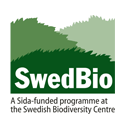Click on images to enlarge
/thumbs/buddleja_madagascariensis9_-_FKS_sml.jpg)
flowers (Photo: Forest and Kim Starr, USGS)
/thumbs/buddleja_madagascariensis6_sml.jpg)
stems and leaf undersides (Photo: Sheldon Navie)
/thumbs/buddleja_madagascariensis5_sml.jpg)
paired leaves (Photo: Sheldon Navie)
/thumbs/buddleja_madagascariensis4_sml.jpg)
habit as a climber (Photo: Sheldon Navie)
/thumbs/buddleja_madagascariensis2_-_FKS_sml.jpg)
close-up of fruit (Photo: Forest and Kim Starr, USGS)
/thumbs/buddleja_madagascariensis13_sml.jpg)
habit as a sprawling shrub (Photo: Sheldon Navie)
/thumbs/buddleja_madagascariensis13_-_FKS_sml.jpg)
infestation (Photo: Forest and Kim Starr, USGS)
/thumbs/buddleja_madagascariensis12_-_FKS_sml.jpg)
close-up of flowers (Photo: Forest and Kim Starr, USGS)
/thumbs/buddleja_madagascariensis10_sml.jpg)
elongated flower cluster (Photo: Sheldon Navie)
/thumbs/buddleja_madagascariensis1_-_FKS_sml.jpg)
clusters of immature and mature fruit (Photo: Forest and Kim Starr, USGS)
Scientific name
Buddleja madagascariensisLam.
Synonyms
Nicodemia madagascariensis (Lam.) R. Parker
Common names
Orange buddleia
Family
Buddlejaceae
Origin
Native to Madagascar.
Naturalised distribution (global)
Locations within which Buddleja madagascariensis is naturalised include eastern and southern Australia, tropical and subtropical Asia warmer parts of New Zealand, south-eastern USA, Hawaii and New Caledonia.
Introduced, naturalised or invasive in East Africa
Buddleja madagascariensis is naturalised in parts Uganda and has been introduced to Kenya and Tanzania (A.B.R. Witt pers. obs.).
Habitat
A weed of warmer temperate, subtropical and tropical regions in habitats where water and good drainage are available (e.g. roadsides, disturbed sites, waste areas, urban open spaces, riparian zones (banks of watercourses), gardens and forest margins). Common in urban gardens in Nairobi, Limuru, and Kericho.
Description
Buddleja madagascariensis is an evergreen shrub with straggling or climbing branches usually growing 1.5-4 m tall, but occasionally reaching 10 m in height.
The young branchlets are covered with densely matted whitish or yellowish hairs (they are tomentose).
The oppositely arranged leaves (2-15 cm long and 1.5-7 cm wide) are borne on stalks (petioles) 15-25 mm long. The leaf blades are narrowly egg-shaped in outline with broad end at base (narrowly-ovate) or narrowly oval (narrowly-elliptic) in shape with entire margins. They come to a point at the tip (have acute apices) and have a rounded (obtuse) or slightly heart-shaped (sub-cordate) bases. The underside of the leaves is very covered with small, white to yellowish hairs (tomentose) while the upper leaf surface is dark green or greyish-green and hairless (glabrous).
The small tubular flowers (10-13 mm long) are dark yellow, orange or salmon pink in colour and sweetly scented. They are arranged in elongated clusters that may be branched or un-branched (in racemes or thyrsoid cymes). These clusters are borne at the tips of the branches and are 5-25 cm long. The stalkless (sessile) or shortly stalked (sub-sessile) flowers have four petals that are fused for most of their length into a tube (corolla tube) 7-10 mm long. The four spreading petal lobes (corolla lobes) are 2-4 mm long and the flowers also have four small green sepals (2-3.5 mm long) that are also fused together (into a calyx tube) for most of their length. Each flower also has four stamens and an ovary topped with a style and a club-shaped (clavate) stigma. Flowers can be present throughout the year.
The fruit are rounded or oblong berries (2.5-5 mm across) containing many small seeds. These fruits turn from whitish in colour to dark bluish, purplish or violet as they mature. The seeds are oval (ellipsoid) in shape and about 1 mm long by 0.5 mm wide.
Reproduction and dispersal
This species reproduces mainly by seed, but can also spread vegetatively via stem fragments. The seeds are most commonly dispersed by birds and other animals that eat the fleshy fruit. Stem segments and seeds can also be dispersed in dumped garden waste.
Similar species
Buddleja madagascariensis is similar to several other buddleias (Buddleja spp.) that have also recently become naturalised around the world. These include Buddleja dysophylla (climbing white sage), Buddleja globosa (orange ball tree), Buddleja lindleyana (Lindley's butterfly bush) and Buddleja davidii (butterfly bush). These species can be distinguished by the following differences:
- B. madagascariensis is a straggling or climbing shrub with elongated (narrowly ovate) leaves 2-15 cm long. Its orange or yellow flowers are borne in dense elongated up to 25 cm long. Unlike the other species, its fruit is a globular blue or black berry (2.5-5 mm across).
- B. davidii is an upright or arching shrub with elongated leaves 4-20 cm long. Its mauve or purple (occasionally white) flowers have an orange-yellow throat and are borne in dense elongated clusters 12-30 cm long. Its fruit is a narrow brown capsule (5-10 mm long) that splits open when mature.
- B. dysophylla is a sprawling or climbing shrub with triangular or heart-shaped (cordate) leaves 1-10 cm long. Its white or greenish-yellow flowers have a reddish-maroon throat and are borne in elongated clusters up to 30 cm long. Its fruit is a very small capsule (2-3.5 mm long) that splits open when mature.
- B. globosa is an upright or arching shrub with elongated leaves up to 20 cm long. Its yellow or orange flowers are borne in small rounded clusters about 2 cm across. Its fruit is a capsule that splits open when mature.
- B. lindleyana is an upright or arching shrub with elongated leaves 3-11 long. Its purple flowers are borne in relatively loose elongated clusters 4-20 cm long. Its fruit is a short oval capsule (4-6 mm long) that splits open when mature.
Economic and other uses
Buddleja madagascariensis has been introduced as a garden ornamental and is also used as a hedge plant.
Environmental and other impacts
B. madagascariensis can be highly invasive and invasive particularly as an early invader of heavily disturbed areas. It regarded as an environmental weed in South and Western Australia. In warmer climates in Hawaii its rapid growth rate enables it to overtop slower growing native species and it develops into large spreading thickets that compete with other vegetation.
B. madagascariensis has been included in the Global Invasive Species Database (GISD 2010).
Management
The precise management measures adopted for any plant invasion will depend upon factors such as the terrain, the cost and availability of labour, the severity of the infestation and the presence of other invasive species. Some components of an integrated management approach are introduced below.
The best form of invasive species management is prevention. If prevention is no longer possible, it is best to treat the weed infestations when they are small to prevent them from establishing (early detection and rapid response). Controlling the weed before it seeds will reduce future problems. Control is generally best applied to the least infested areas before dense infestations are tackled. Consistent follow-up work is required for sustainable management.
Small plants can be uprooted by hand. The application of herbicide to cut stumps can be effective the larger plants and good control for plants with stems of greater than 7.5 cm diameter can be achieved using a suitable herbicide in crop oil painted onto the bark (basal bark treatment) and to larger stems that were frilled. When using any herbicide always read the label first and follow all instructions and safety requirements. If in doubt consult an expert.
The editors could find no information on any biological control agents for this species.
Legislation
Not listed as a noxious weed by the state or governments in Kenya, Tanzania and Uganda.
References
Germplasm Resources Information Network (GRIN). www.ars-grin.gov/npgs/index.html. National Germplasm Resources Laboratory, National Genetic Resources Program, Agricultural Research Service (ARS), United States Department of Agriculture (USDA), Beltsville, Maryland, USA. Accessed March 2011.
GISD (2010). Global Invasive Species Database online data sheet. Buddleja madagascariensis (vine, climber, shrub). Global Invasive Species Database. www.issg.org/database. Invasive Species Specialist Group. Accessed March 2011.
Pacific Island Ecosystems at Risk (PIER). Buddleja madagascariensis Lam., Buddlejaceae: plant threats to Pacific ecosystems. www.hear.org/Pier/species/buddleja_madagascariensis.htm. Institute of Pacific Islands Forestry, Hawaii, USA. Accessed January 2011.
Editors
Agnes Lusweti, National Museums of Kenya; Emily Wabuyele, National Museums of Kenya, Paul Ssegawa, Makerere University; John Mauremootoo, BioNET-INTERNATIONAL Secretariat - UK.
Acknowledgments
This fact sheet is adapted from The Environmental Weeds of Australia by Sheldon Navie and Steve Adkins, Centre for Biological Information Technology, University of Queensland. We recognise the support from the National Museums of Kenya, Tropical Pesticides Research Institute (TPRI) - Tanzania and Makerere University, Uganda. This activity was undertaken as part of the BioNET-EAFRINET UVIMA Project (Taxonomy for Development in East Africa).
Contact
BioNET-EAFRINET Regional Coordinator: [email protected]












